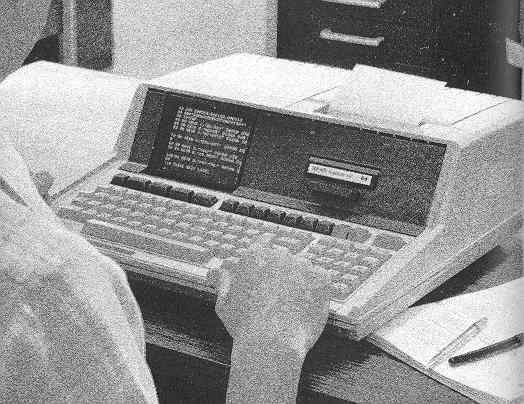

The Series 80 is a collection of microcomputers that was released by Hewlett Packard in the late seventies. It offered a large number of accessories, including ROMs, adapters, and interface modules. The first member of the family, the HP-85 was targeted towards engineers. It was a compact machine comprising an integral screen, mass storage device (tape) and thermal printer. Although by no means lightweight, it was luggable; HP even offered a carrying bag.
Other members of the family that did not include a printer or tape were the HP-83, the HP-87 which featured more memory and a wider display, and the HP-86 which provided an even larger screen in the form of an external monitor.
Mid-life improvements to the family included the HP-85B, the HP-87XM and the HP-86B. All offered additional built-in features and more memory.
Finally, there was also an embedded version of the HP-85 that was called the 9915A/B.
Although marketed as a single compatible family of computers, the Series 80 machines were split into two groups. The low-end comprising the HP-83 and HP-85, and the high-end with the HP-86 and HP-87 computers.
Subtle changes in the architecture necessitated conversion of BASIC programs between the two groups, and precluded the transfer of binary programs (in the form of ROM modules, or images loadable from mass storage media).
Although the engineering bias is evident in the many peripherals used for data collection and instrumentation, HP tried to target business users as well. The high-end members of the family had also business applications like Visicalc and CP/M (via an add-on card).
The machines are unbelievably slow and the version of BASIC used is idiosyncratic. However, they were very advanced in their time, offering graphics (on screen and hard copy), a multitude of peripherals, and most importantly instrumentation buses like HP-IB and HP-IL.
Although Series 80 hardware is easily procurable from second hand vendors and auction sites like eBay, documentation and programs are very difficult to locate. Without documentation these systems are useless. Even simple operations are impossible without the correct incantation (e.g. the command for copying a file from one drive to another is COPY "FILE1:D700" TO "FILE2:D701", if you forget the quotes, or the TO keyword the command will fail).
This is the reason for creating this site. I wish to gather all the material that is still available for the Series 80 and post them on this site, so that people who wish to use these venerable machines can use this site as a resource.
In this site you will find, articles about the Series 80, programs, manuals, ROM images, etc.
Thanks for visiting.
It has come to my attention that people sell CD-ROMs with copies of the material from this site. I have no problem with that, although please be aware that HP still retains copyright of their material and may feel otherwise, especially if you profit from the transaction.
I have placed this information here in order to help people, so I must insist that when you pass material from this site you tell people were you got it from. This is to ensure that everybody gets to know of this site so that they can check from time to time for updates.
The only exception to this rule is photographic material (i.e. digital photographs that I have taken myself). I own the copyright of this material and you may not use it elsewhere. This is to deter people from placing pictures from this site on their auction pages and defrauding customers.
Unauthorized use of this photographic material (e.g. in eBay auctions) will incur a charge of $150 per use.

The HP-86 (left) and the HP-85 (right)
|
HP-87 with printer and floppy disk drives |
HP-9915A with HP-85A in the background |
Read the original 1980 review of the HP-85 in BYTE Magazine.
For those willing to take a trip down memory lane, here is an HP-85 playing the William Tell Overture.
In the library section you will find copies of manuals, programs, and ROM images.
There is also a page with descriptions of most Series 80 accessories, and an articles page with contributed hints and tips on how to use the Series 80 computers.
Special section on the HP 9915 embedded version of the HP-85.
Special section on the HP 9111A digital tablet.
